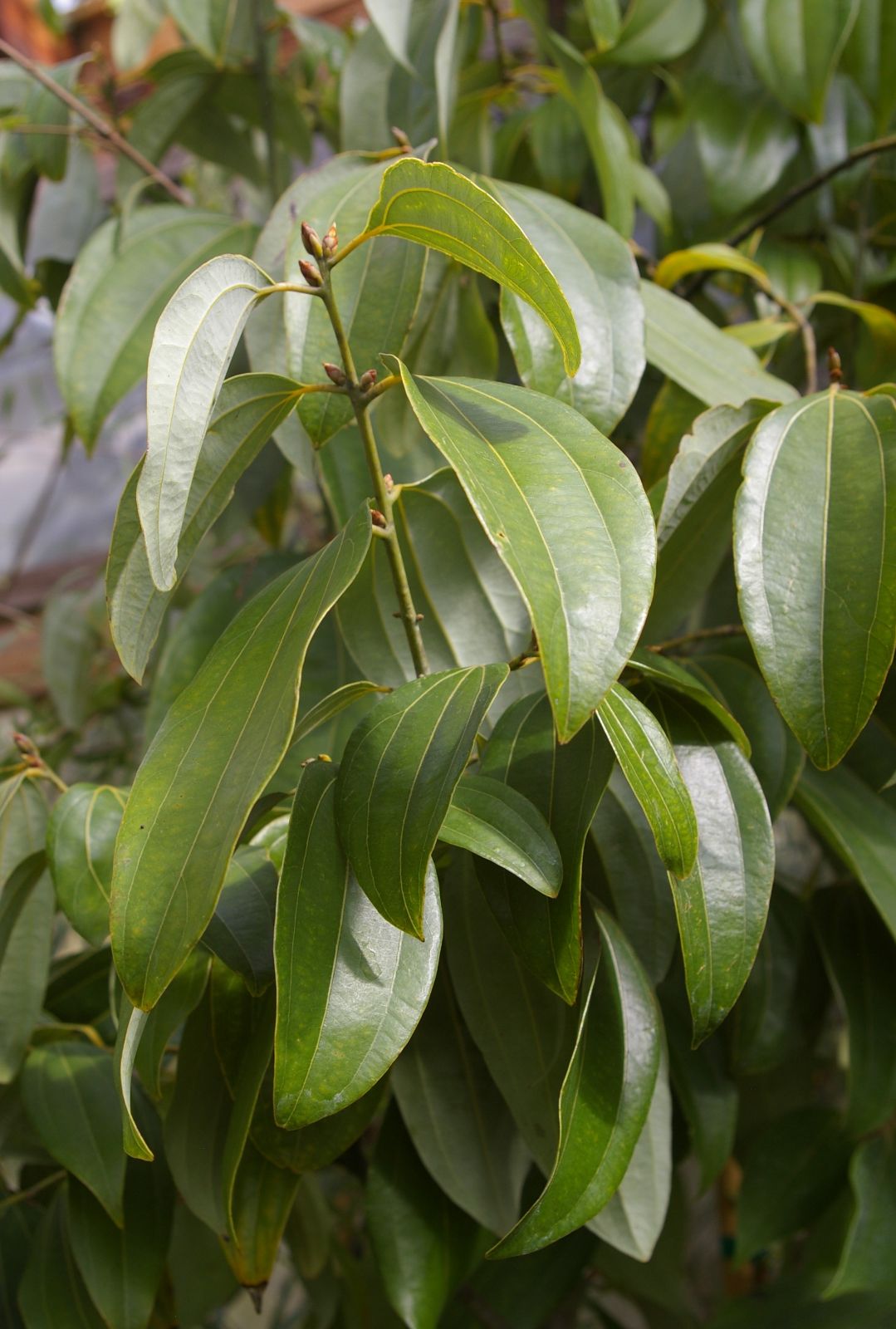Cinnamomum japonicum
Credits
Article from New Trees by John Grimshaw & Ross Bayton
Recommended citation
'Cinnamomum japonicum' from the website Trees and Shrubs Online (treesandshrubsonline.
Genus
Synonyms
- Cinnamomum chekiangense Nakai
- Cinnamomum insularimontanum Hayata
- Cinnamomum pedunculatum Nees
- Cinnamomum tenuifolium J. Sugimoto
Tree to 15 m, 0.35 m dbh. Branchlets slender and red or reddish brown, glabrous and fragrant. Leaves evergreen, subopposite to alternate, 7–10 × 3–3.5 cm, oblong to ovate or lanceolate, leathery, upper surface dark green and glabrous, lower surface greyish green, opaque and glabrous, triplinerved with lateral nerves arising 1–1.5 cm above the base, margins entire, apex acute to acuminate; petiole robust, 0.8–2 cm long, reddish brown and glabrous. Inflorescence axillary and paniculate, shorter than the leaves, 3–4.5(–10) cm long, branching to bear cymes. Flowers three to five per cyme, 4.5 mm long. Drupe black, ellipsoid, 0.7 × 0.5 cm; cupule shallowly cup-shaped, margins entire or dentate. Flowering April to May, fruiting July to September (China). Ohwi 1965, Liet al. 2005. Distribution CHINA: Anhui, Fujian, Jiangsu, Jiangxi, Zhejiang; JAPAN: Honshu, Kyushu, Ryukyu Is., Shikoku; NORTH KOREA; SOUTH KOREA; TAIWAN. Habitat Evergreen broadleaved forest at low elevation (between 300 and 1000 m asl), often near the coast. USDA Hardiness Zone 7–8. Conservation status Lower Risk; but Cinnamomum japonicum occurs in isolated populations, often on coastal islands, and is susceptible to habitat degradation and loss. Illustration NT253, NT255. Cross-reference K328.
Cinnamomum japonicum is well established in cultivation in North America but poorly known in western Europe, although there seems to be no reason why it should not thrive here, in milder areas. Two principal sources of introduction have led to the existence in cultivation of two stocks of material, under the names C. chekiangense and C. japonicum, but any differences probably represent natural variation within the one broadly circumscribed species, the introductions having come from widely separated areas. The stock known as C. chekiangense (frequently misspelled as chekiangensis) in North America was first introduced to the United States by Cliff Parks in the 1980s and has proved to be remarkably hardy, frequently surviving temperatures of –18 ºC, although with some damage to stems during a prolonged period of –22 ºC at Camellia Forest Nursery, North Carolina in the 1980s (Hogan 2008), and stocks known as C. japonicum seem to be equally tolerant. The principal source for the plants labelled C. japonicum in North America seems to have been an importation from Nanjing Botanic Garden made by Piroche Plants in the 1990s.
Under either name this is an exceptionally beautiful tree with great elegance. While young it forms a narrow column, but with age it extends horizontally spreading branches with drooping shoots. The leaves are also pendulous, and equally beautiful, their long outline enhanced by the three veins. On emergence they are pink or reddish, but mature to a slightly glossy dark green with a dull grey-glaucous reverse. The bark remains green for several years. It is probably best grown in light or dappled shade, with plenty of moisture during the growing season. In such conditions it thrives in the Pacific Northwest at least as far north as Vancouver, while in the east it is hardy in North Carolina and should be tried in sheltered sites further north.




